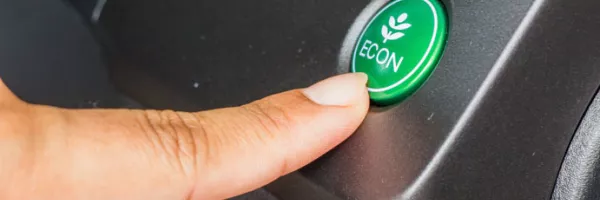
Top 6 Green Driving Tips
According to the Environmental Protection Agency, in 2013 transportation was responsible for 27 percent of greenhouse gas emissions in the United States. Given that the U.S. is one of the top two countries in the world with regards to emissions, that's not a small number. For drivers who want to do their part to cut down on emissions, though, a few simple green drivng tips can go a surprisingly long way.
Tip #1: Clear Out That Junk in Your Trunk
Have you ever cleaned out your car, and when you were done, thought, "wow, how did I fit all of that in there?" If you've got an extra suitcase in your backseat, and boxes of stuff you never got around to unpacking, chances are good the weight is taking a toll on your gas mileage. If you unburden your ride, then you'll drive further on less gas, which will pump fewer emissions from your tailpipe.
Tip #2: Pump it Up
Keeping your tires inflated to their full volume is important for driver safety, but it also saves energy when you're driving. If you've ever pulled a wagon or pushed a wheelbarrow with tires that weren't filled to capacity, you know exactly how much more work you needed to put in. Full tires are easier to move, which means you're using less overall fuel than you would driving around on half-inflated tires.
Tip #3: The Need For Speed is Killing Your Mileage
While it might be thrilling to put the pedal to the floor and burn rubber out of the stop light, that sort of behavior eats up gas. Ditto for braking hard, and reducing your speed quickly. If you increase or decrease your speed gradually, then you're going to burn less gas, as well as putting less overall wear and tear on your ride. So, if it's possible, let your car coast to a slower speed from further back to save gas instead of hitting the brake when you get too close to an intersection, or a slow-moving truck.
Tip #4: If You Have Cruise Control, Use It
You probably never think about all the little corrections you make while you're out on the road. Add some gas to pass someone, slow down when the motorcycle pulls out in front of you, it's all just one, big dance. If you're on a long trip, or if you're driving on the open road, you should get your car up to speed and hit the cruise control. Keeping your vehicle at a steady speed so that you only have to drive will eliminate a lot of adjustments that can eat into your fuel efficiency, and it will result in overall fewer emissions while you drive.
Tip #5: Remember to Try and Drive 55
Did you ever wonder why 55 miles an hour is the posted speed limit on so many roads? Well, one reason is that it's a sweet spot that lets most vehicles get the best mileage. While most cars are capable of going faster, if 55 is the optimal speed (as it is in most common vehicles), an increased speed is going to lead to a decreased fuel efficiency. Just remember that your safety, and those of your fellow drivers, takes precedence over any green driving practices. Only follow this tip if it safe to do so; if posted speed are at least 5 miles above 55, stick with the speed limit and keep pace with others on the road.
Tip #6: Trade Up
While an expensive solution, more modern vehicles get better fuel efficiency (with all other factors being equal). Part of that is because legal standards have changed, forcing manufacturers to build more fuel-efficient cars. Part of it is that miles per gallon has become a legitimate selling point, which means drivers who want to look out for the environment have options. You don't have to buy a hybrid or electric vehicle; just invest in something that's more efficient than your current car.